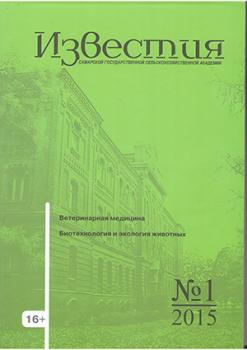Samara, Russian Federation
Samara, Russian Federation
Samara, Russian Federation
The purpose of research is the creation of apricot fruit varieties able sustainably fructify in the environment of forest-steppe of the Middle Volga Area. Experimental studies were carried out on the Cultivar Collector of Samara Research Institute of Horticulture and Medicinal Plants «Zhiguli Gardens» from 1985 to 2010. Since 2011up to present the work has been performed in a Samara State Agricultural Academy on the basis of horticultural farm Ltd. «Kutuluk» Bogatovskiy district. The objects of research were different varieties of apricot eco-geografic groups of selected forms of national selection and varieties bred in Samara Research Institute «Zhiguli gardens». The study, selection and transfer of hybrid seedlings to the state variety-testing were performed, under the methodology of selection and program of Cultivar study of fruit, berry and nut crops. As a result of long years of breeding under interkind hybridization in Samara Region 9 apricot varieties have been developed and transmitted to state variety-testing , 4 of which have been included into the State Register of the Russian Federation. In a period of organic resting the varieties are able without significant damage of the wood resist severe winters with a minimum temperatures at –39… –40°C. Favorable microzones for apricot cultivating have been identified, the yield, diseases resistance and technological qualities of fruit studied. As a result of 16 years of observations the apricot hasn’t fructified for 6 years. Because of the flower buds frozen in severe winters there was no yield 3 times, 3 times the harvest perished as a result of freezing of flower buds from frost occurred after long thaws. Variety differences of resistance to moniliosis shock were revealed. Such a resistance out of Samara region fruit the sort of Samara apricots has got. Samara apricots are smaller in size than any southern ones, but the biochemical composition and fruit taste compete to the latter.
horticulture, selection, variety, cultivar, apricot
1. Avdeev, V. S. Some of the results of apricot acclimatization // Introduction and acclimatization of ornamental and cultural plants. - Kuibyshev, 1973. - T.109. - P. 46-61.
2. Avdeev, V. I. The gene pool of the local apricot Orenburg region (Urals) / V. I. Avdeev, A. Z .Saudabayeva, E. P. Starodubtseva // Bulletin of the Orenburg State Agrarian university. - 2011. - №2. - Р. 234-238.
3. Golubev, A. M. Selection of apricot in Saratov // Gardens of Rossia. - 2010. - №1. - Р. 42-48.
4. Dzhigadlo, E. N. Improved assortment of stone fruit crops in central Rossia [Electronic resource] / E. N. Dzhigadlo, A. A. Gulyaev // Modern gardening. - 2013. - №4. - URL: http://journal.vniispk.ru (date accessed: 02.03.2016).
5. Drozdovsky, E. M. Moniliosis anthracnose and cherries in Non-Black Earth / E. M. Drozdowskiy, G. A. Kornatsky // Fruit and berry-culture of Russia : coll. scientific. works VSTISP. -M., 1999. - T. VI. - P. 185-189.
6. Minin, A. N. Selection of apricot for the frost resistance in Samara Area environment // Fruit and berry-culture of Russia : coll. scientific. works VSTISP. - M., 2012. - T. 31, P. 2. - P. 73-77.
7. Molchanov, V. A. Apricots of Middle Volga Area. - Samara : Parus-Print, 2004. - 80 p.
8. The program and method of selection of fruit, berry and nut crops / under ed. E. N. Sedova. - Orel : VNIISPK, 1995. - 502 p.
9. The program and method Cultivar fruit, berry and nut crops / under ed. E. N. Sedova, T. P. Ogoltsovoy. - Orel : VNIISPK, 1999. - 608 p.
10. Skvortsov, A. K. Apricot in Moscow and the Moscow region / A. K. Skvortsov, L. A. Kramarenko. - Moscow : KMK, 2007. - 186 p.





